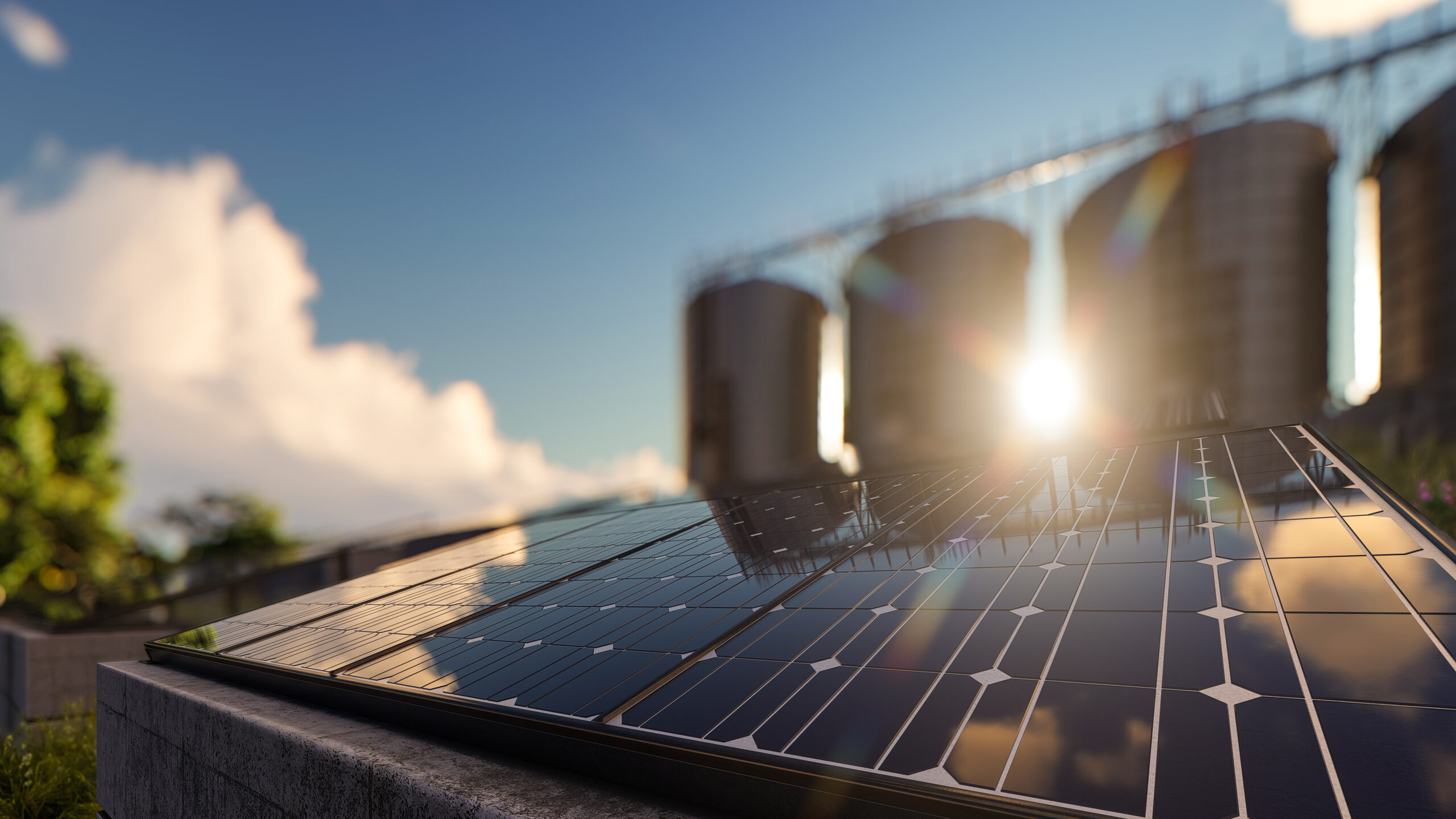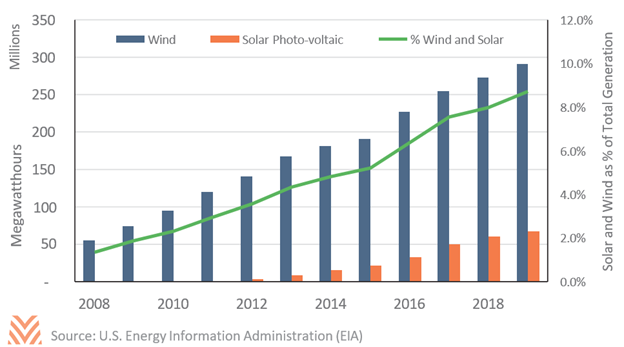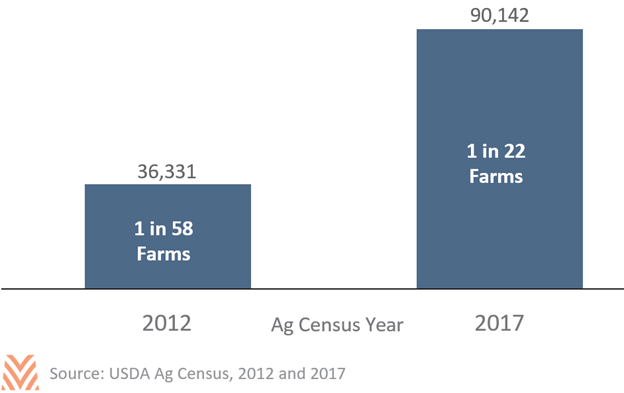Renewable Energy Growth in Rural America

Renewable energy is a rapidly growing segment of the U.S. power generation portfolio. Renewable power sources (including wind, solar, and hydro) have grown to comprise nearly 20% of U.S. power generation. According to data published by the U.S. Energy Information Administration (EIA), wind and solar generation in the U.S. have grown by 269% and 38,266% in the last ten years, respectively. Industry analysts and economists expect growth in the deployment of renewable power resources to continue in the coming years. Over the next ten years, the EIA expects solar energy generation to increase by nearly 200%, while wind generation is forecast to increase by 27%. While the growth rate of solar generation is greater than that of wind generation, wind generation is expected to remain the largest source of renewable generation in the U.S.
Three factors have been key drivers for the growth of wind and solar generation. First, tax credit programs have allowed the costs of renewable generation to be more competitive with other forms of power generation. However, it is worth noting that these tax credit programs, which have been in existence for over a decade, are phasing out, and without legislative action, they will expire in 2023. Second, many states have developed renewable portfolio standards. These portfolio standards typically have long lead times, as much as one or two decades. Still, their existence has pushed utilities to obtain renewable power to make progress toward the portfolio goals. Finally, as the tax credits and renewable portfolio standards accelerated the deployment of renewable generation, the costs of renewable generation equipment decreased dramatically. Lazard, a leading financial advisory firm, estimates that the unit cost of solar generation has decreased by 88% over the past ten years, while the unit cost of wind generation has decreased by 68% during the same period. As a result of these cost decreases, even after removing the tax credit benefits, Lazard reports that utility-scale renewable generation is cost-competitive with fossil fuel- based forms of generation.

Rural America is a key area for the deployment of renewable power generation. Large-scale wind and solar generation installations require substantial land areas, and these installations can provide economic benefits to the communities that house them. Jobs are created during the construction of the power generation site, with fewer but longer-term jobs related to the ongoing maintenance and operations of the facility. The property tax base is also increased, which provides cash flow benefits to the local municipality. Finally, local landowners can benefit from leasing land to the renewable energy project. These land leases are typically long-term leases that can be as long as 30 years due to the long economic life of the renewable generation equipment. These land leases generally have inflation-linked fixed rental rates that can provide compensation greater than agricultural land rental rates, which in these uncertain times can be a beneficial source of ancillary income. According to data from the USDA’s Census of Agriculture, more farmers and ranchers are installing renewable energy-producing systems on their properties, particularly solar panels. From 2012 to 2017, there was a 132% increase in renewable energy systems reported on-farm. More than 70% of that increase was due to solar panel installations (see the figure below).

Rural landowners who are considering leasing their land for a renewable energy project should consider several important factors. First, are they comfortable with losing control of the property for as many as three decades? The landowners will still hold title to the land, but they will be ceding rights to the property in exchange for a long-term income stream that will require little to no work on the part of the landowner. Second, is the renewable project developer well-known, with a successful track record for bringing projects on-line in a timely fashion? As in all business ventures, any landholder looking to lease out land for renewable energy projects wants to be involved with a reputable partner that can execute on its obligations. Third, does the land lease contract include provisions that will require all of the renewable energy fixtures to be removed at the end of the lease term? Landowners will want their property to be returned in as similar a condition as possible to how it was before the construction of the energy project. Fourth, who is expected to off-take the power? If the renewable energy project is not able to sell its power effectively, then it is possible that the land lease payment will not be made on a timely basis. An important mitigant for this risk is that the land lease is typically one of the priority payments made by the project, even ahead of the project’s equipment and construction financing costs.










